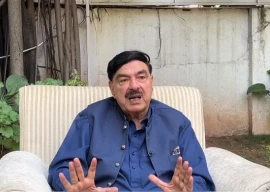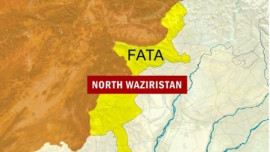
“Earlier, the optimal season for growing wheat used to be October. Now it has crossed mid-November,” University of Agriculture Faisalabad (UAF) Vice Chancellor Iqrar Ahmed Khan observed while discussing the impact of changing weather patterns. Khan said two major changes had impacted crops’ growth cycle. He said these were a rise in temperature and the erratic behaviour of precipitation.
He stressed the need for agronomic diversity, since Pakistan’s agriculture sector largely focused on growing wheat, rice, cotton and sugarcane. He said there was a need to look into new technology to conserve water. “We also need to grow crops that are more water efficient,” Khan said.
“Agriculture is amongst the first victims of rising carbon dioxide levels,” said, Food and Agriculture Organisation Country Director Patrick T Evans said. He said Pakistan’s efforts to address climate change could result in increased food insecurity. Evans linked the problem of climate change to growing population. “It is important to address the issue of population growth,” he said.
World Food Programme Deputy Country Director Stephen Gulling spoke about the need to create nationally-owned safety nets and programmes to address those particularly vulnerable to climate change. “We can no longer have a few organisations working on these issues. This requires strong leadership and partnership,” he said. Gulling said it was also crucial to look at ways of producing food that were resilient to climate change.
The impact of climate change on health was discussed by Nosheen Usman of the World Health Organisation and Heartlife president Sania Nishtar. Usman highlighted the relationship between rising temperatures and increasing outbreaks of diseases like malaria and dengue.
Speakers also pointed out that Pakistan’s response to climate change had been lacklustre. “Our strategies and plans are the best prototypes but they only exist on paper,” International Union for Conservation of Nature country representative Mahmood Akhter Cheema said. He said the rate of deforestation in the country was also high.
“The level of existing knowledge about climate change in Pakistan is appalling,” United Nations Development Programme Country Director Marc-Andre Franche said. Franche said while the construction of the China-Pakistan Economic Corridor (CPEC) in the Northern Areas was a great initiative, it would also increase truck movement that would lead to environmental degradation. He stressed the need to maintain a balance between development and the environment saying, “When it comes to developmental choices, Pakistan is still making choices of the ’50s and ’60s while the world happens to be in 2015,” Franche said.
He stressed the need to promote climate literacy saying it was not restricted to having more experts on the issue but also about enlightening government officials across the board. He said it was important to have officials who could think green when making decisions irrespective of their area of expertise.
World Meteorological Society Vice President Qamaruz Zaman Chaudhry who also authored the National Climate Change Policy discussed its chief aims. He said it took into account the need to adapt and introduce smart climate solutions. Chaudhry also spoke about the forthcoming conference in Paris sounding hopeful of reaching a final deal. “The US-China and the US-India deals in this regard are very important,” he said.
Published in The Express Tribune, October 15th, 2015.



1731655243-0/BeFunky-collage-(61)1731655243-0-165x106.webp)


1731656720-0/Copy-of-Untitled-(44)1731656720-0-270x192.webp)
1731651715-0/Express-Tribune-(1)1731651715-0-270x192.webp)









COMMENTS
Comments are moderated and generally will be posted if they are on-topic and not abusive.
For more information, please see our Comments FAQ